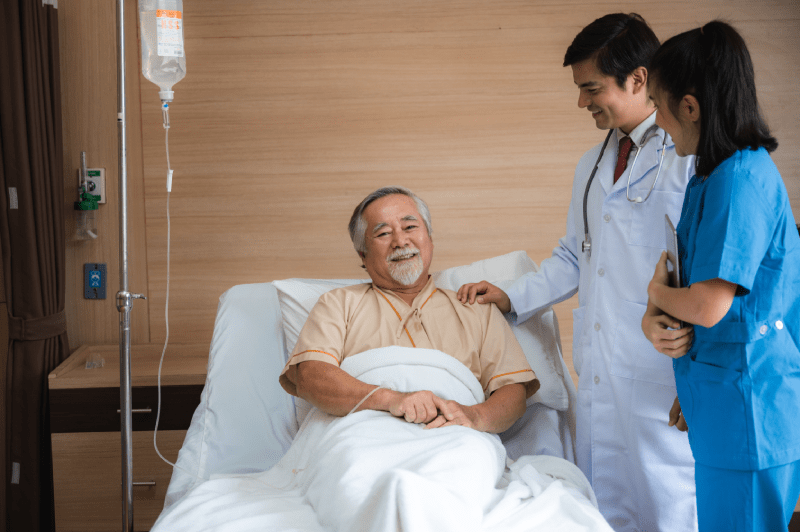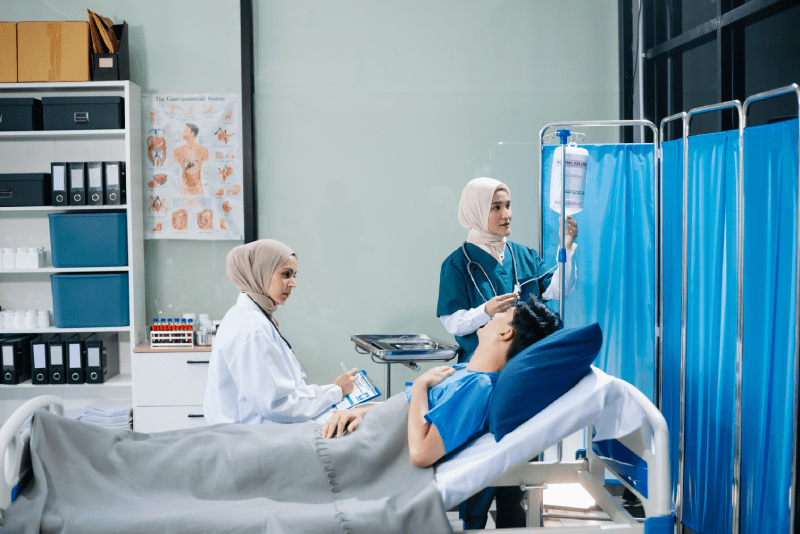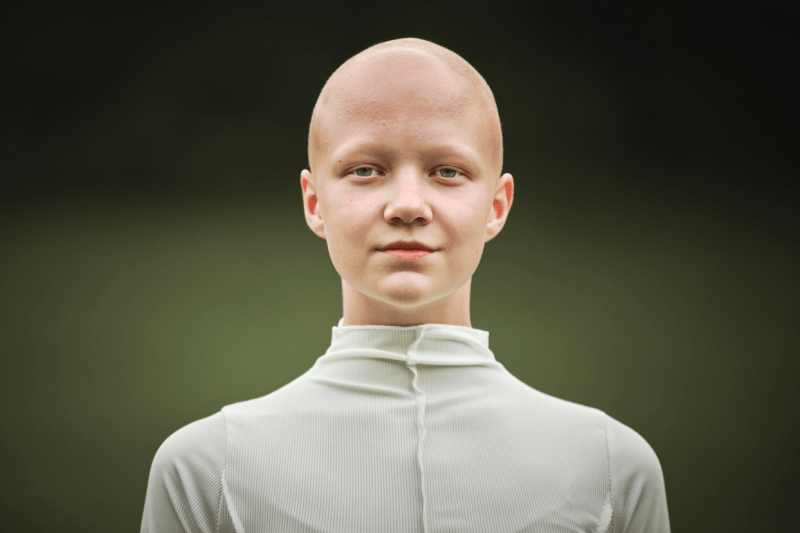What Is Chronic Leukemia And Why Is Complete Cure Difficult?
Chronic leukemia is a type of blood cancer where cancer cells grow slowly and can often progress asymptomatically for years. The main reason why a complete cure is difficult is that cancer cells intertwine with normal blood cells in the body, surviving for long periods and having the potential to develop resistance to treatments. Especially in types like Chronic Myeloid Leukemia (CML) and Chronic Lymphocytic Leukemia (CLL), current treatments effectively control the disease but cannot eradicate it completely. Treatment is generally based on a lifelong strategy of keeping the disease in remission.
What Is The Most Important Clinical Difference Between Acute And Chronic Leukemia?
The most important clinical difference between acute and chronic leukemia is the rate of disease progression and the maturity level of the cells. In acute leukemia, immature (blast) cells multiply rapidly, requiring emergency treatment. Chronic leukemia, however, is characterized by more mature cells and progresses slowly over years; therefore, treatment may not be required immediately after diagnosis. While the acute type poses a life threat within months, the chronic type can be stabilized for years, providing a significant distinction in disease management and patient prognosis.
Can Chronic Myeloid Leukemia (CML) Be Completely Cured?
Chronic Myeloid Leukemia (CML) is generally not considered a completely curable disease today, but it can be excellently controlled thanks to targeted drugs (TKIs – Tyrosine Kinase Inhibitors). TKIs target the BCR-ABL fusion protein that causes CML, killing cancer cells and allowing patients to live a normal life for many years. Although attempts are made to discontinue treatment after achieving deep remission with these drugs in some patients, the disease is usually a condition that is ‘chronically managed’ rather than ‘cured’.
What Is The Only Method That Provides Cure For Chronic Lymphocytic Leukemia (CLL)?
The only method that can potentially provide a cure for Chronic Lymphocytic Leukemia (CLL) is Allogeneic Stem Cell Transplantation. However, due to the slow-progressing nature of CLL and the high risks associated with transplantation, this method is generally reserved for young, high-risk patients or those who have become resistant to standard targeted therapies (like ibrutinib, venetoclax). Other treatments (chemotherapy, smart drugs) aim to keep the disease under control but rarely provide a complete cure, emphasizing the unique role of allogeneic transplantation.
Is The Chance Of Cure Higher In Acute Leukemias (ALL And AML)?
Yes, the chance of cure is higher in Acute Leukemias (Acute Lymphoblastic Leukemia – ALL and Acute Myeloid Leukemia – AML) compared to Chronic Leukemias. Especially in ALL in children, cure rates exceeding 85-90% can be achieved with intensive chemotherapy and supportive treatments. In AML and adult ALL, stem cell transplantation following chemotherapy is often used to maximize the chance of cure. This success results from the ability of aggressive yet short-term and targeted treatments to halt rapid cell proliferation.
What Advanced Targeted Drugs Does Turkey Offer In CML Treatment?
Oncology centers in Turkey offer all advanced-generation Tyrosine Kinase Inhibitors (TKIs) used in CML treatment at international standards. Among these, the most commonly used include Imatinib, Dasatinib, Nilotinib, and Bosutinib. Furthermore, access to the newest generation drugs is available for patients who develop resistance to first and second-line TKIs. These medications are meticulously selected based on the patient’s genetic analysis and enable patients to keep their disease stable for many years, highlighting Turkey’s advanced treatment capacity.
In Which Cases Is Stem Cell Transplantation Considered In CML Treatment?
Stem cell transplantation has ceased to be the first-line treatment option for CML since the introduction of TKIs but still holds critical importance. Transplantation is generally considered in cases where the disease has become resistant to TKI treatments or has transformed from the chronic phase into a more aggressive phase (accelerated or blast crisis). Transplantation is the only potentially curative option in these high-risk situations, but requires careful evaluation due to its high associated risk profile.
How Is Quality Of Life Maintained In Chronic Leukemia Treatment?
Maintaining the quality of life in chronic leukemia treatment is one of the fundamental goals of therapy. Targeted TKI drugs or new-generation CLL medications demonstrate fewer side effects compared to traditional chemotherapy. Regular blood count monitoring, management of potential side effects (fatigue, mild nausea), and receiving psychosocial support are essential for patients. The greatest measure of success in long-term treatment is the patient’s ability to continue their work and social life without interruption.

When Is The “Watch And Wait” Approach Applied For CLL Patients?
The “Watch and Wait” approach for CLL patients is generally applied to low-risk, asymptomatic, and slowly progressing patients. This approach allows the patient to avoid the potential side effects of starting treatment immediately. The decision to initiate treatment is typically re-evaluated when symptoms such as a rapid rise in lymphocyte count, significant enlargement of lymph nodes, or signs of bone marrow failure like anemia emerge. Regular follow-up during this period is of vital importance.
What Is The Average Lifespan In Incurable Leukemias?
In chronic leukemias that are incurable but manageable (especially CML with TKIs), the patients’ average lifespan has significantly extended and approaches that of a normal life expectancy. CML patients can live 20 years or more with appropriate TKI treatment. In CLL, thanks to new-generation targeted therapies, patients can usually live for many years free from the burden of the disease. The prognosis varies depending on the patient’s age and the risk group of the disease.
What Does Remission Mean In Acute Leukemia And How Does It Differ From Cure?
In acute leukemia, remission means that the cancer cells (blasts) in the bone marrow have dropped below 5% and normal blood count values have returned. This implies that the active symptoms of the disease have disappeared, but a small number of leukemia cells may still be present in the body. Cure, on the other hand, is the assumption that the disease will not return, with no symptoms or residual presence detected over a long period (usually 5 years or more). Consolidation and maintenance therapies after remission are critical for achieving cure.
What Steps Are Followed If Resistance To TKIs Develops In CML Treatment?
If resistance to TKIs develops in CML treatment, the first step is to perform a new genetic analysis to determine why the tumor developed resistance. New mutations such as T315I can often be detected. Depending on the type of these mutations, a switch to more potent second or third-generation TKIs is made. If the resistance is very aggressive or associated with multiple mutations, Allogeneic Stem Cell Transplantation may be re-evaluated as the only definitive solution.
What Are The New Targeted Drugs Used In CLL Treatment?
New targeted drugs that have revolutionized CLL treatment in recent years are BTK inhibitors (e.g., Ibrutinib, Acalabrutinib) and BCL-2 inhibitors (e.g., Venetoclax). These oral medications block the signaling pathways necessary for the survival of cancer cells. They have lower toxicity compared to traditional chemotherapy and hold an important place in treating elderly patients or those with co-existing conditions. These drugs can keep CLL under control for long periods, providing significant hope to patients worldwide.
What Is The Role Of Genetic And Molecular Analysis In Chronic Leukemias?
Genetic and molecular analysis plays a vital role in the diagnosis and treatment follow-up of chronic leukemias. Detecting the presence of the BCR-ABL gene (Philadelphia chromosome) in CML is mandatory for diagnosis. In CLL, genetic markers such as 17p deletion or IgHV mutation status are used to predict the aggressiveness of the disease and which targeted drug will yield a better response. These analyses form the foundation for personalizing the treatment strategy.
What Technology Do Oncology Centers In Turkey Use In Chronic Leukemia Treatment?
Oncology centers in Turkey use the latest technologies at international standards in chronic leukemia treatment. These include High-Resolution Tissue Typing (HLA), special HEPA-filtered sterile units for stem cell transplantation, sensitive molecular PCR tests for TKI monitoring, and Next-Generation Sequencing (NGS) laboratories. This technological infrastructure ensures accurate diagnosis, selection of effective drugs, and high-safety stem cell transplantations, crucial for achieving the best outcomes.
Which Types Of Leukemia Can Be Treated With Stem Cell Transplantation?
Stem cell transplantation is a treatment method that can potentially provide a cure for many types of leukemia, including especially Acute Myeloid Leukemia (AML), high-risk Acute Lymphoblastic Leukemia (ALL), and Chronic Myeloid Leukemia (CML) resistant to TKIs. Transplantation replaces the diseased bone marrow, destroyed by chemotherapy, with stem cells taken from a healthy donor, enabling the immune system to recognize and destroy cancer cells (Graft versus Leukemia – GvL effect).
Must I Continue CML Treatment For Life?
The necessity of continuing TKI medication for life in CML treatment varies from patient to patient. The goal of the treatment is to achieve deep molecular remission. In some low-risk patients who maintain this deep remission (level of disease undetectable in the blood) for many years (usually 2-5 years), attempts to discontinue TKI treatment can be made under strict medical supervision and meticulous follow-up. However, the decision to stop treatment is a careful situation requiring continuous molecular monitoring.
What Are The Criteria For Starting Treatment In CLL Patients?
The criteria for starting treatment in CLL patients are specific clinical or laboratory findings that indicate the need to exit the “Watch and Wait” period. These include the presence of significant disease-related symptoms (fatigue, night sweats, weight loss), rapid and significant enlargement of lymph nodes or spleen, and signs of bone marrow failure such as anemia or a drop in platelet count. The treatment decision is generally made when these criteria begin to negatively impact the patient’s quality of life.
What Directions Do New Studies Focus On In Incurable Leukemias?
New research in incurable leukemias focuses particularly on overcoming resistance mechanisms and targeting the disease’s stem cells. The development of new-generation, stronger, and less toxic targeted drugs for CML and CLL is ongoing. Furthermore, immunotherapy approaches that have revolutionized leukemia treatment, such as CAR T cell therapy, are also promising areas for resistant chronic leukemias, offering hope for more profound and durable responses.

What Advantage Does The Cost Of Leukemia Treatment Provide In Turkey?
Leukemia treatment is highly costly, especially requiring stem cell transplantation and long-term use of smart drugs. Turkey offers access to these treatments at 50-70% more affordable costs compared to Western countries. At the same time, oncology centers in Turkey provide state-of-the-art TKIs and transplantation services in internationally accredited facilities, ensuring that patients receive the best treatment without sacrificing quality for cost advantage.
Why Is High-Dose Chemotherapy Applied In Acute Leukemia?
The main reason for applying high-dose chemotherapy in acute leukemia is that the disease is very rapidly proliferating and aggressive. The goal is to rapidly destroy all leukemia cells (blasts) in the bone marrow and bloodstream to achieve complete remission. High-intensity chemotherapy plays a critical role in reducing the risk of disease recurrence. Because this aggressive treatment completely suppresses the patient’s bone marrow, it requires special sterilization and supportive treatments against the risk of infection and bleeding.
What Is Done If Leukemia Relapses After Stem Cell Transplantation?
If leukemia relapses after stem cell transplantation, the treatment options are determined by the patient’s condition and the timing of the relapse. In this situation, more intense treatments are usually applied, such as a second stem cell transplantation, donor lymphocyte infusion (DLI), or new-generation targeted drugs (especially new TKIs or BCL-2 inhibitors in acute leukemias). The treatment plan for relapsed patients must be decided upon multidisciplinarily in a relapse council.
What Is The Importance Of Molecular Remission In CML Treatment?
Molecular remission in CML treatment means that the BCR-ABL gene (the cause of the disease) is undetectable in the patient’s blood or bone marrow using highly sensitive methods (PCR). This signifies a deeper level of control than cellular remission. Deep molecular remission indicates a very low risk of disease relapse and is a fundamental condition for attempting treatment discontinuation (TKI-free remission). Regular molecular tests monitor whether this remission level is maintained.
What Is The Side Effect Profile Of New Treatments For CLL Patients?
New targeted therapies (BTK and BCL-2 inhibitors) used for CLL patients have a more tolerable side effect profile compared to traditional chemotherapy. However, these drugs also have their own specific side effects. For example, BTK inhibitors can cause bleeding or heart rhythm disorders in some patients, while BCL-2 inhibitors carry the risk of Tumor Lysis Syndrome at the start of treatment. Early diagnosis and management of these side effects are critical for treatment success.
What Is The Role Of Regular Follow-Up In Managing Chronic Leukemia?
The role of regular follow-up in managing chronic leukemia is vital. Monthly or quarterly molecular tests are required in CML patients to check the appropriateness of the TKI dose and to detect drug resistance early. In CLL, timely detection of changes in blood counts indicating disease progression during the “Watch and Wait” period is essential for making the decision to start treatment at the right time. Regular follow-up determines the need for treatment while maintaining the patient’s quality of life.
Why Is Psychological And Social Support Important In Leukemia Treatment?
The diagnosis of leukemia and the long-term treatment process place a heavy psychological and social burden on patients and their families. Therefore, psychological and social support is as important as the treatment itself. Psycho-oncology specialists help patients cope with emotional difficulties such as anxiety, depression, and treatment compliance issues. Social support ensures the patient stays connected to social life and maintains high morale, directly supporting the overall recovery process.
How Long Does It Take To Return To Normal Life After Leukemia Treatment?
The time it takes to return to normal life after leukemia treatment depends on the type of leukemia and the intensity of the treatment applied. Acute leukemia patients undergo an intense period of isolation and follow-up for 6 months to 1 year after stem cell transplantation for complete healing and immune system reconstruction. Chronic leukemia patients, however, can generally continue their work and social lives even during their treatment, with regular medication use and check-ups becoming a part of their lives.
What Is The Difference Between The Two Types Of Stem Cell Transplantation Used In Leukemia Treatment?
The two main types of stem cell transplantation used in leukemia treatment are Autologous (the patient’s own cells) and Allogeneic (donor cells) transplantation. Allogeneic Transplantation is generally preferred for leukemia because healthy donor cells enter the patient’s immune system and attack the leukemia cells (Graft versus Leukemia – GvL effect). Autologous transplantation is used more for diseases like Hodgkin/Non-Hodgkin Lymphoma. Allogeneic transplantation is riskier but has higher curative potential.
How Does Age Affect Treatment Selection In Chronic Leukemias?
Age significantly affects the treatment option in chronic leukemias. Especially Allogeneic Stem Cell Transplantation is generally not applied to patients over 65-70 years old due to the high toxicity risk. However, new-generation, less-intensive (reduced intensity) transplantation regimens have broadened this limit. While treatment in young patients focuses on maximizing the chance of cure, the priority in older patients is to minimize side effects and preserve the quality of life.
What Is The Role And Importance Of Nutrition In Leukemia Treatment?
Nutrition in leukemia treatment is of vital importance for coping with treatment side effects, strengthening the immune system, and preventing muscle loss. Especially in immunocompromised patients after chemotherapy or transplantation, a sterile and balanced diet (cooked and pasteurized foods) reduces the risk of infection. Ensuring adequate protein and calorie intake increases the patient’s tolerance to treatment and accelerates the recovery process.
Which Symptoms Should Be Monitored During Follow-Up In Incurable Leukemias?
Symptoms that should be monitored during follow-up in incurable (but managed) chronic leukemias may indicate that the disease is accelerating or becoming aggressive. These include unexpected rapid weight loss, high and persistent fever, significant night sweats, rapidly growing lymph nodes, and signs of bone marrow failure such as severe anemia or thrombocytopenia. These symptoms should be reported to the oncologist immediately.

How Are Patients In Complete Remission From Acute Leukemia Followed Up?
The follow-up of patients in complete remission from acute leukemia is intense and meticulous to detect the risk of relapse early. Follow-up includes regular blood tests, bone marrow biopsies, and Imaging Methods (MRI/CT) during the remission period. The most critical follow-up method is high-sensitivity molecular tests that detect minimal leukemia cells (MRD – Minimal Residual Disease) that may have remained in the body. The detection of MRD is often an early warning signal for changing treatment before a relapse occurs.
Why Should Turkey Be An Alternative For Leukemia Treatment?
Turkey should be a strong alternative for leukemia treatment because: It has well-equipped centers that perform Allogeneic and Autologous Stem Cell Transplantations at international standards and with high success rates. It provides rapid access to the newest generation targeted drugs used in chronic leukemia types like CML and CLL. All this is offered with more affordable costs compared to Western countries and comprehensive health tourism services (accommodation, translation).
What Is The Role Of Immunotherapy (Excluding CAR T) In Chronic Leukemias?
The role of immunotherapy (excluding CAR T cell therapy) in chronic leukemias is generally more limited than in acute leukemias but can be used in some CLL patients. Especially monoclonal antibodies (e.g., Anti-CD20 antibodies) target proteins on the surface of cancer cells, helping the immune system destroy those cells. These treatments, often combined with chemotherapy or targeted drugs, can be effective in prolonging the remission period in CLL treatment.
How Important Is Family Support In The Success Of Leukemia Treatment?
Family and social support is as important as the treatment itself in the success of leukemia treatment. Especially during the long and strenuous chemotherapy, radiotherapy, and transplantation processes, keeping the patient’s morale high, providing logistical support during hospital stays, and encouraging the patient to adhere to treatment instructions are critical tasks for the family. Family support increases the patient’s psychological resilience, thereby enhancing their compliance with treatment and the chance of success.
What Factors Prolong Lifespan In Incurable Leukemias?
The most important factors that prolong lifespan in incurable but manageable chronic leukemias are regular and uninterrupted use of targeted drugs (TKIs), regular molecular follow-up that detects the disease’s acceleration early, absolutely avoiding smoking and alcohol, maintaining an ** active and healthy lifestyle**, and immediately reporting possible side effects for early intervention. Disciplined adherence to treatment has the greatest impact on lifespan.
What Should Be The First Step To Start Leukemia Treatment In Turkey?
The first step to start leukemia treatment in Turkey is to gather the patient’s all current medical reports, bone marrow biopsy results, and genetic/molecular analysis reports. These reports should be sent to Cure Holiday, an internationally accredited health tourism consultancy company. Cure Holiday forwards these reports to the most experienced hematology and stem cell transplantation centers in Turkey, ensuring the patient receives a personalized treatment plan and cost quotation specific to their leukemia type and risk group. This initial step begins a fast and correct treatment journey.
